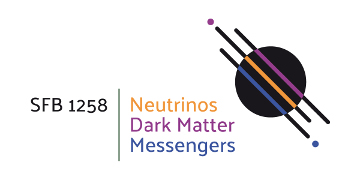Neutrinos are ghostly particles that rarely interact with anything. They play an important role in nuclear decays, in the processes that keep the sun burning and in the origin of the elements that the earth and we are made of. Neutrinos come in three "flavours" - and from the observation that the flavour of a neutrino can change over time (so-called "neutrino oscillation"), we know that they must have a tiny mass: much smaller than any of the other massive particles we know (like the electron or proton), but not zero. The origin of this tiny mass is one of the big puzzles in physics today.
A simple and elegant framework to explain the lightness of neutrinos is the see-saw mechanism: By coupling the known neutrinos to two or three heavy hypothetical particles called "sterile neutrinos", the known neutrinos are lifted up like on a see-saw. The heavier the sterile neutrino is, the lighter the known ones become. But does this really explain the neutrino mass puzzle? Or does it just replace one puzzle by introducing another - an unknown very large mass scale?
The elegance of the see-saw model
Here the research by Alejandro Ibarra and his group sets off. There already exists a large energy scale in physics: the Planck-scale, where the gravitational force between individual particles becomes comparable in strength to the other fundamental forces of physics. Quantum effects of gravity will kick in there, and our current theory of particle physics cannot calculate what will happen.
Effects of gravity and the laws of nature
Physicists expect that some of the apparent laws of nature might be broken by effects of gravity. This is the case for the law of "lepton number conservation": Never have we observed that leptons - particles like electrons or neutrinos - were created without an equal number of anti-leptons. If this law is broken by effects of gravity, the sterile neutrinos may acquire a mass of the order of the Planck-scale.
Too light to explain observations
However, if sterile neutrinos were that heavy, the see-saw mechanism predicts that the known neutrinos would be too light to explain observations. But the theorists around Alejandro Ibarra have found a loophole: They argue that gravity effects may generate a Planck-scale mass for only one of the sterile neutrinos. Then, they show that the other sterile neutrinos would get their mass through quantum effects induced by their interactions with the very heavy one, leading to masses for the known neutrinos in qualitative agreement with observations."The Planck-scale lepton number breaking framework provides a natural explanation for the light neutrino masses and has a high predictive power", says Patrick Strobl, one of the researchers. The team plans to work out detailed analyses of this framework in follow-up publications.
Original publication
A. Ibarra, P. Strobl, T. Toma:
<link https: journals.aps.org prl pdf physrevlett.122.081803 external-link-new-window internen link im aktuellen>"Neutrino masses from Planck-Scale Lepton Number Breaking"
Phys. Rev. Lett. 122, 081803, 27 February 2019
DOI: 10.1103/PhysRevLett.122.081803



